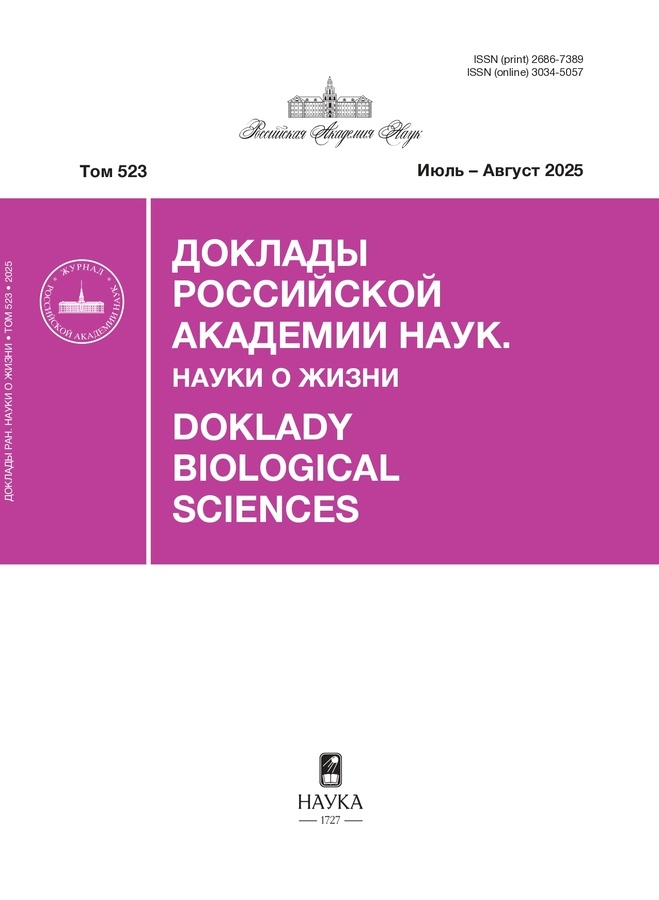Role of preoperative stress in Wistar rats at myocardial injury during extracardiac surgery
- Authors: Kondashevskaya M.V.1, Manukhina E.B.2,3, Aleksankina V.V.1, Artemyeva K.A.1, Kaktursky L.V.1
-
Affiliations:
- Avtsyn Research Institute of Human Morphology Federal State Budgetary Scientific Institution “Petrovsky National Research Centre of Surgery”
- Federal State Budgetary Scientific Institution “Research Institute of General Pathology and Pathophysiology”
- University of North Texas Health Science Center
- Issue: Vol 523, No 1 (2025)
- Pages: 389-396
- Section: Articles
- URL: https://medjrf.com/2686-7389/article/view/693496
- DOI: https://doi.org/10.31857/S2686738925040024
- ID: 693496
Cite item
Abstract
The work was performed on 4 groups of old Wistar rats: anesthesia only (An), noncardiac surgery (NS), extracardiac surgery (ES) with prior stress for 5 days (SNS), and intact animals used as a control. As evident from the absence of increases in proinflammatory cytokines and C-reactive protein 10 days after the surgery, the animals did not have any inflammation. The presence of stress was judged by the highest level of corticosterone in the SNS rats. These animals had myocardial injury after NS (MINS) indicated by structural and metabolic disorders, as well as an increase in the blood concentration of high-sensitive cardiac troponin I (hs-cTnI). Despite the fact that the rats in the An and NS groups had some ischemic zones in the myocardium, they did not develop MINS, since there was no oxidant-antioxidant imbalance and, most importantly, no increase in hs-cTnI. This study showed for the first time that “simple” aseptic noncardiac surgery in combination with preoperative stress can induce MINS in healthy Wistar rats. It is proposed to use a decrease in the level of superoxide dismutase as an additional biomarker of MINS.
About the authors
M. V. Kondashevskaya
Avtsyn Research Institute of Human Morphology Federal State Budgetary Scientific Institution “Petrovsky National Research Centre of Surgery”
Email: marivladiko@mail.ru
Moscow, Russian Federation
E. B. Manukhina
Federal State Budgetary Scientific Institution “Research Institute of General Pathology and Pathophysiology”; University of North Texas Health Science Center
Email: marivladiko@mail.ru
Moscow, Russian Federation; 3500 Camp Bowie Blvd, Fort Worth 76107, USA
V. V. Aleksankina
Avtsyn Research Institute of Human Morphology Federal State Budgetary Scientific Institution “Petrovsky National Research Centre of Surgery”
Email: marivladiko@mail.ru
Moscow, Russian Federation
K. A. Artemyeva
Avtsyn Research Institute of Human Morphology Federal State Budgetary Scientific Institution “Petrovsky National Research Centre of Surgery”
Email: marivladiko@mail.ru
Moscow, Russian Federation
L. V. Kaktursky
Avtsyn Research Institute of Human Morphology Federal State Budgetary Scientific Institution “Petrovsky National Research Centre of Surgery”
Author for correspondence.
Email: marivladiko@mail.ru
Moscow, Russian Federation
References
- Fauci A.S. HIV and AIDS: 20 years of science // Nat Med. 2003. V. 9. № 7. P. 839–843.
- Lingappa J.R., Lingappa V. R., Reed J. C. Addressing Antiretroviral Drug Resistance with Host-Targeting Drugs-First Steps towards Developing a Host-Targeting HIV-1 Assembly Inhibitor // Viruses. 2021. V. 13. № 3. P. 451.
- Jäger S., Cimermancic P., Gulbahce N., et al. Global landscape of HIV-human protein complexes // Nature. 2011. V. 481. № 7381. P. 365–370.
- Schynkel T., Snippenberg W. V., Verniers K., et al. Interactome of the HIV-1 proteome and human host RNA // EMBO Re P. 2024. V. 25. P. 4078–4090.
- Delelis O., Carayon K., Saïb A., et al. Integrase and integration: biochemical activities of HIV-1 integrase // Retrovirology. 2008. V. 5. P. 114.
- Engelman A.N. and Maertens G. N. Retrovirus-Cell Interactions. Academic Press, San Diego, CA, P. 163–198. 2018.
- Rozina A., Anisenko A., Kikhai T., et al. Сomplex Relationships between HIV-1 Integrase and Its Cellular Partners // Int. J. Mol. Sci. 2022. V. 23. P. 12341.
- Engelman A.N. and Kvaratskhelia M. Multimodal Functionalities of HIV-1 Integrase // Viruses. 2022. V. 14. P. 926.
- Ciuffi A., Llano M., Poeschla E., et al. A role for LEDGF/p75 in targeting HIV DNA integration // Nat Med. 2005. V. 11. P. 1287–1289.
- Yamamoto S.P., Okawa K., Nakano T., et al. Huwe1, a novel cellular interactor of Gag-Pol through integrase binding, negatively influences HIV-1 infectivity // Microbes Infect. 2011. V. 13. № 4. P. 339–349.
- Allouch A., Di Primio C., Alpi E., et al. The TRIM family protein KAP1 inhibits HIV-1 integration // Cell Host Microbe. 2011. V. 9. P. 484–495.
- Ait-Ammar A., Bellefroid M., Daouad F., et al. Inhibition of HIV-1 gene transcription by KAP1 in myeloid lineage // Sci Re P. 2021. V. 11. P. 2692.
- Hearps A.C., Jans D. A. HIV-1 integrase is capable of targeting DNA to the nucleus via an Importin α/β-dependent mechanism // Biochemical Journal. 2006. V. 398. № 3. P. 475–484. doi: 10.1042/bj20060466
- Dziuba N., Ferguson M. R., O'Brien W.A., et al. Identification of cellular proteins required for replication of human immunodeficiency virus type 1 // AIDS Res Hum Retroviruses. 2012. V. 28. P. 1329–1339.
- Yoder A., Yu D., Dong L., et al. HIV envelope-CXCR4 signaling activates cofilin to overcome cortical actin restriction in resting CD4 T cells // Cell. 2008. V. 134. P. 782–792.
- Speth C., Prohászka Z., Mair M., et al. A 60 kD heat-shock protein-like molecule interacts with the HIV transmembrane glycoprotein gp41 // Mol Immunol. 1999. V. 36. № 9. P. 619–628.
- Ha H.C., Juluri K., Zhou Y., et al. Poly(ADP-ribose) polymerase-1 is required for efficient HIV-1 integration // Proc Natl Acad Sci USA. 2001. V. 98. P. 3364–3368.
- Bueno M.T., Reyes D., Valdes L., et al. Poly(ADP-ribose) polymerase 1 promotes transcriptional repression of integrated retroviruses // J Virol. 2013. V. 87. № 5. P. 2496–2507.
- Ramakrishnan R., Liu H., Donahue H., et al. Identification of novel CDK9 and Cyclin T1-associated protein complexes (CCAPs) whose siRNA depletion enhances HIV-1 Tat function // Retrovirology. 2012. V. 9. P. 90.
- Knyazhanskaya E., Anisenko A., Shadrina O., et al. NHEJ pathway is involved in post-integrational DNA repair due to Ku70 binding to HIV-1 integrase // Retrovirology. 2019. V. 16. № 1. P. 30.
Supplementary files











